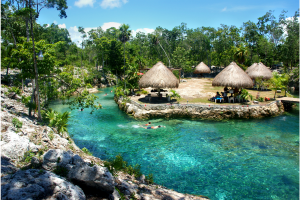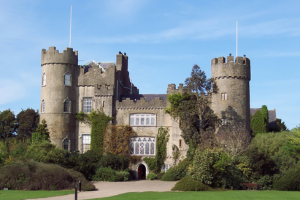In this post I will show you Top Things to Do in Barcelona in 3 Days. Barcelona, the vibrant capital of Catalonia in Spain, is a city that effortlessly blends historic grandeur with cutting-edge culture and architecture. With its sun-drenched beaches, world-class art, and tantalizing cuisine, there’s no shortage of experiences to be had. However, with just three days to explore, you’ll want to make every moment count. Here is your ultimate guide to experiencing the best of Barcelona in 72 unforgettable hours.
Day 1: The Heart of Catalan Culture
Morning: The Gothic Quarter and La Rambla

Begin your journey in the Gothic Quarter, the oldest part of the city, where winding medieval streets are filled with hidden gems. Nestled in the heart of Barcelona, the Gothic Quarter (Barri Gòtic) and La Rambla are two of the city’s most iconic and vibrant destinations, offering a blend of historic charm and bustling city life. A visit to the Gothic Quarter is like stepping back in time, as you wander through narrow medieval streets flanked by towering Gothic buildings. This historic district is a labyrinth of alleys and squares, each with its own story, housing hidden gems like the stunning Barcelona Cathedral, with its impressive Gothic façade and serene cloister, and the picturesque Plaça del Rei, a square that has witnessed centuries of history.
Not far from the Gothic Quarter, La Rambla is a lively boulevard that stretches from Plaça de Catalunya to the waterfront. This bustling promenade is lined with street performers, local artists, and vibrant flower stalls, creating a lively atmosphere that captures the essence of Barcelona’s spirit. Here, you can savor traditional Catalan cuisine at one of the many terrace cafes or explore the famous La Boqueria market, a sensory feast of colors, aromas, and flavors.
Visiting these two iconic spots offers an enriching experience that combines the historical depth of Barcelona with its lively contemporary culture. Whether you’re marveling at the Gothic architecture, enjoying a leisurely stroll along La Rambla, or indulging in the local culinary delights, these destinations promise an unforgettable journey through the heart of Barcelona’s rich heritage and vibrant street life.
Afternoon: Picasso Museum and El Born

After lunch, head to the nearby Picasso Museum, which houses one of the most extensive collections of artworks by the 20th-century Spanish artist Pablo Picasso. Visiting the museum is not just an opportunity to immerse oneself in Picasso’s artistic evolution but also a chance to explore El Born, one of Barcelona’s most vibrant and historic neighborhoods.
The Picasso Museum, housed in five adjoining medieval palaces, offers a unique journey through Picasso’s formative years, showcasing over 4,000 works. The collection emphasizes his deep connection to Barcelona, a city that played a pivotal role in his early artistic development. Highlights include the comprehensive series of his early works, the famous Las Meninas series, and a plethora of his innovative ceramics.
El Born, with its narrow streets and picturesque squares, complements the cultural experience. This neighborhood is a tapestry of history, art, and modernity, where Gothic architecture coexists with trendy boutiques and bustling tapas bars. After visiting the museum, take a stroll through the Passeig del Born, soak in the atmosphere of the Mercat del Born, or visit the stunning Santa Maria del Mar church, an exemplary monument of Catalan Gothic architecture.
A day spent exploring the Picasso Museum and El Born offers more than just an artistic pilgrimage; it’s a deep dive into the cultural heartbeat of Barcelona. Whether you’re an art aficionado or a curious traveler, this experience marries the allure of Picasso’s genius with the charm of Catalan culture, making it an unforgettable addition to your Barcelona itinerary.
Evening: Catalan Cuisine Experience
For dinner, immerse yourself in the local culinary scene. Opt for a tapas tour or visit one of the many renowned Catalan restaurants to savor dishes like “pa amb tomàquet” (bread with tomato) and “escudella i carn d’olla,” a hearty stew. Cap off your night with a leisurely stroll along the beachfront in Barceloneta, taking in the Mediterranean breeze.
Day 2: Gaudí and Modernisme
Morning: Sagrada Família and Park Güell

Exploring Barcelona is incomplete without delving into the wonders of Sagrada Família and Park Güell, two of Antoni Gaudí’s most celebrated creations. These sites are not just tourist attractions; they are a fusion of artistic innovation, architectural brilliance, and natural beauty, standing as essential stops on any Barcelona itinerary.
The Sagrada Família, an architectural marvel still under construction, embodies Gaudí’s ambitious vision and lifelong dedication. Its elaborate exteriors narrate various scriptural tales, while the soaring spires captivate onlookers. Inside, the basilica astonishes with its columnar forest-like structure, the mesmerizing effect of light filtering through vibrant stained glass, and the intricate details that imbue the space with a sacred ambiance, transcending religious lines.
Not far from this architectural wonder is Park Güell, initially conceived as a housing development but now a beloved public park. This enchanting space transports visitors to an almost magical realm, adorned with colorful tile mosaics, sinuous structures, and the iconic dragon sculpture at its entrance. The terrace, with its distinctive, curvilinear bench mosaic, offers breathtaking vistas of the city, serving as an ideal spot for contemplation or capturing memories.
Designated as UNESCO World Heritage Sites, both Sagrada Família and Park Güell exemplify Barcelona’s architectural and cultural richness, particularly showcasing the innovative spirit of Catalan Modernism. These landmarks are more than just sights; they offer a journey into Gaudí’s imaginative mind, promising a memorable encounter with art, architecture, and the essence of Barcelona for every visitor, regardless of their interest in art or history.
Afternoon: Passeig de Gràcia and Casa Batlló

After lunch, stroll down Passeig de Gràcia, one of Barcelona’s major avenues known for its luxury shopping and architectural landmarks. As one of the city’s most important avenues, this boulevard is lined with architectural marvels, luxury boutiques, and tantalizing eateries, offering a blend of experiences that captivate both the eye and the spirit.
Among the jewels of Passeig de Gràcia, Casa Batlló stands out as an emblem of creativity and imagination. Designed by the illustrious Antoni Gaudí, this building is a testament to Modernist architecture, with its fluid lines, organic forms, and intricate details that defy conventional design norms. A visit to Casa Batlló is not just a tour; it’s an immersion into Gaudí’s world, where every nook and cranny tells a story, and the play of light and color brings the inanimate to life.
The facade of Casa Batlló, with its vibrant mosaic of broken ceramic tiles, creates an iridescent effect that mimics the surface of a calm sea. The arched roof, resembling the back of a dragon, pays homage to the legend of Saint George, adding a layer of mystique to the architectural narrative.
Inside, the attention to detail is equally mesmerizing. From the whimsical staircase that seems to be carved out of a fairy tale, to the light-filled atrium that serves as the building’s lungs, every element is a stroke of genius.
Visitors to Passeig de Gràcia and Casa Batlló are treated to more than just a visual feast. They embark on a journey through time, where history and innovation dance in harmony, leaving an indelible mark on the soul. Whether you’re an architecture aficionado, a history buff, or simply in search of beauty, this iconic duo promises an unforgettable experience that epitomizes the spirit of Barcelona.
Evening: Magic Fountain of Montjuïc

In the evening, head to the Magic Fountain of Montjuïc for a spectacular light and water show. The enchanting Magic Fountain of Montjuïc stands as a highlight in Barcelona, offering a mesmerizing fusion of water, light, and music. Created by the visionary Carles Buïgas for the 1929 International Exposition, this impressive fountain graces the foot of Avenida Maria Cristina in the Montjuïc area, adjacent to the Plaça d’Espanya and the majestic National Art Museum of Catalonia.
The fountain captivates its audience with a stunning performance that blends water movements, vibrant lights, and harmonious melodies. It operates through an intricate arrangement of jets, capable of propelling water to heights of up to 52 meters, setting the stage for a breathtaking light display. As evening descends, the fountain awakens, painting the night with an array of vivid hues synchronized to an eclectic mix of music, ranging from timeless classical pieces to contemporary hits.
Performances are usually held in the evening, particularly on weekend nights, making it an ideal entertainment option for various groups, including families, couples, and individuals exploring solo. It’s wise to verify the show times ahead of your visit, as they can change with the seasons.
The Magic Fountain of Montjuïc is not only a feast for the senses but also a testament to Barcelona’s innovative spirit in the early 20th century, showcasing the city’s unique ability to merge artistry, technology, and communal enjoyment. Whether drawn to its technological wonders, artistic flair, or the sheer delight of experiencing an engaging performance, a visit to the Magic Fountain offers a glimpse into the vibrant essence of Barcelona.
Day 3: Barcelona’s Beaches and Contemporary Culture
Morning: Olympic Port and Beach Relaxation

Artwork near the Olympic Harbor of Barcelona
Begin your final day in Barcelona at the Olympic Port, built for the 1992 Summer Olympics. This vibrant area, nestled between the picturesque beaches of Barceloneta and Nova Icaria, is more than just a docking spot for yachts and boats; it’s a dynamic hub of entertainment, dining, and leisure activities, making it a must-visit destination for both locals and tourists.
Upon arrival, visitors are greeted by the striking sight of the Port’s modernist architecture, including the iconic twin towers, which serve as a gateway to this maritime district. The area is teeming with a wide array of restaurants and bars, offering everything from traditional Catalan cuisine to international dishes, ensuring that there’s something to satisfy every palate. Seafood, naturally, is a highlight here, with many establishments serving freshly caught fare right by the water’s edge.
For those looking to soak up the Mediterranean sun, the Port is conveniently flanked by some of Barcelona’s most popular beaches. Here, one can enjoy a variety of water sports, from windsurfing to stand-up paddleboarding, or simply relax on the golden sands. As the sun sets, the Port transforms into a lively nightlife scene, with numerous clubs and bars providing the perfect backdrop for an evening out.
Beyond its recreational offerings, Olympic Port is steeped in history, symbolizing Barcelona’s transformation and its ongoing commitment to blending tradition with modernity. Whether you’re a maritime enthusiast, a foodie, or someone in search of a vibrant cultural experience, Olympic Port promises a memorable visit filled with scenic views, delectable tastes, and an unmistakable energy that captures the essence of Barcelona. Enjoy a leisurely breakfast by the marina before spending a few hours relaxing on one of Barcelona’s beautiful beaches, such as Nova Icària or Bogatell.
Afternoon: Contemporary Art and El Raval
Exploring the vibrant heart of Barcelona, a visit to the bustling district of El Raval presents a golden opportunity for art enthusiasts and culture vultures alike. Renowned for its eclectic energy, El Raval is not just a neighborhood; it’s a canvas that reflects the city’s dynamic blend of history, diversity, and creativity. At the core of this cultural melting pot lies the Contemporary Art scene, a testament to Barcelona’s enduring love affair with avant-garde expressions and innovative artistry.
A stroll through El Raval is akin to walking through an open-air museum, where every corner reveals a new surprise. From striking street art that adorns the ancient walls to cutting-edge galleries, the area pulsates with artistic vibrancy. The crown jewel of this artistic haven is the Barcelona Museum of Contemporary Art (MACBA), an architectural marvel that houses an impressive collection of post-1945 Spanish and Catalan art. Its stark white facade contrasts beautifully with the colorful tapestry of El Raval, making it a must-visit for art lovers.
But the allure of El Raval extends beyond its galleries. The neighborhood’s narrow streets are lined with bohemian cafes, quirky shops, and multicultural eateries, each adding a unique flavor to the area’s charm. Engaging in conversations with local artists or simply people-watching in the bustling squares can provide deeper insights into the creative soul of Barcelona.
Visiting El Raval offers more than just an artistic journey; it’s an immersive experience that captures the essence of contemporary culture. Whether you’re an art connoisseur or a curious traveler, El Raval’s vibrant spirit and rich tapestry of contemporary art are sure to leave you inspired and enchanted.
Evening: Farewell Feast and Flamenco

For your final evening, indulge in a farewell feast at one of Barcelona’s many exquisite restaurants, perhaps in the bustling area of Gràcia. After dinner, consider experiencing a traditional Flamenco show, a passionate and fiery expression of Spanish culture that will leave a lasting impression of your time in Barcelona.
Barcelona, with its rich history, artistic legacy, and lively atmosphere, promises an unforgettable three-day adventure. From the Gothic Quarter’s narrow alleys to the modernist wonders of Gaudí, each day in this dynamic city brings new discoveries and delights. Whether you’re indulging in the local cuisine, soaking up the Mediterranean sun, or immersing yourself in the vibrant street life, Barcelona is sure to enchant and inspire.




